The Coinage of Philip II And Philip III
by Kent Ponterio
“Shield and Cross coinage”
During the reign of Philip II a new coinage design was adopted. For the obverse design the great shield of the House of Hapsburg was chosen. The reverse design bears the cross of Jerusalem with lions and castles in the quadrants. Although the coat of arms on the obverse shield or “shield” went through many changes over the years, this basic design type of “shield and cross” coinage remained the standard in Mexico until the introduction of “milled” coinage in 1732. In short “cob” coinage was the longest running type coin ever issued in Mexico, spanning the reigns of Philip II, Philip III, Philip IV, Charles II, Philip V and of course Luis I.
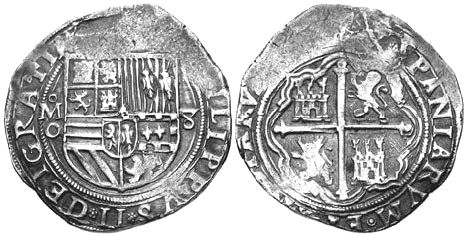
Philip II
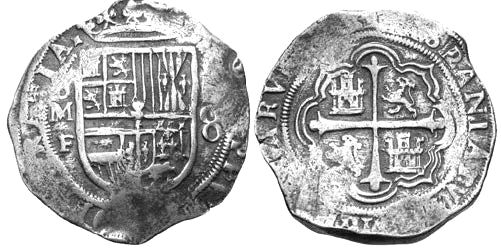
Philip III
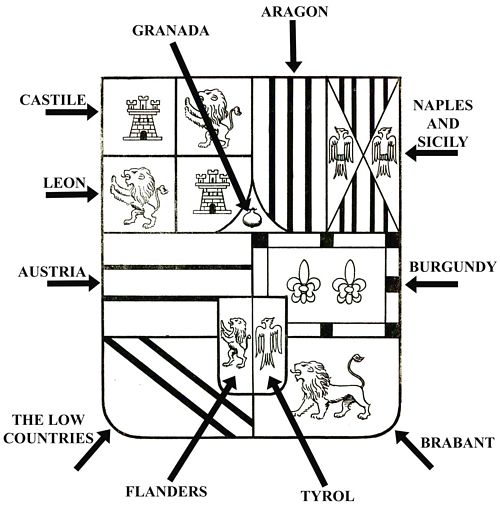 The great shield of the House of Hapsburg
The great shield of the House of Hapsburg
Philip II and Philip III
The basic design of the coinage of Philip II and Philip III is virtually identical with a few minor exceptions. Both kings used the great shield of the House of Hapsburg as the obverse and the cross of Jerusalem with lions and castles in the quadrants for the reverse. This raises a question that I have been asked on multiple occasions, “How do you tell the difference between a cob of Philip II and Philip III when there is no visible king’s ordinal?” This can be somewhat confusing at times, especially with examples of assayer “F”, which was used for both kings. In most cases there are a few diagnostic differences that once understood should make it fairly easy to make this determination.
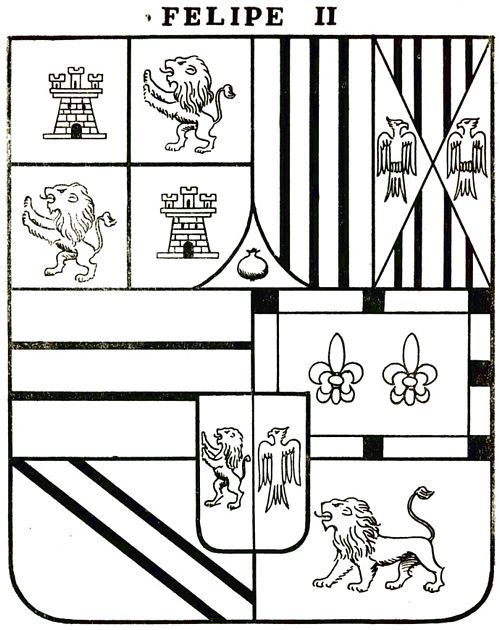
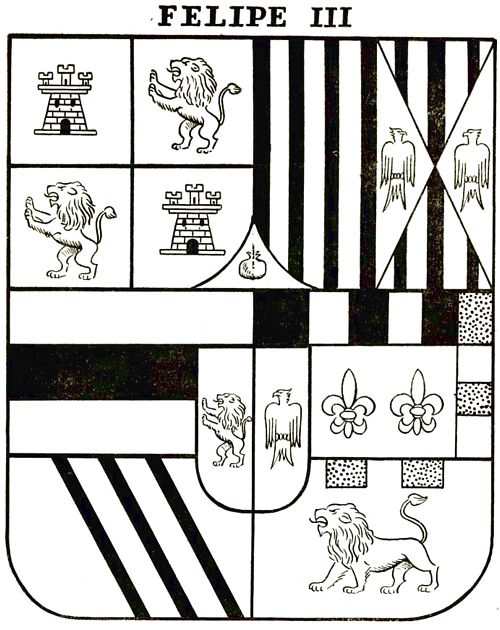
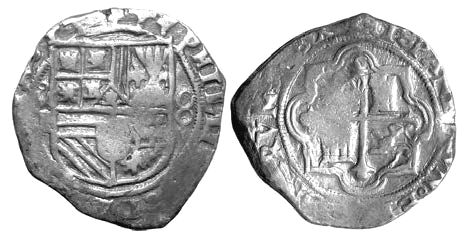
Philip II
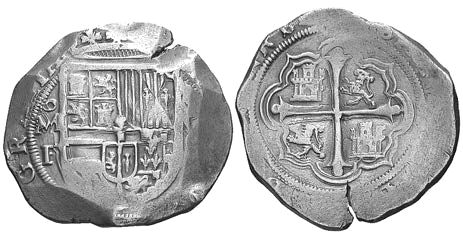
Philip III
Crowns


Philip III Crown Philip II Crown
The first basic distinction to look for when determining whether a 1, 2, 4 or 8 reales is Philip II or Philip III is the crown. Most Philip II cobs exhibit a crown that is attached to the top of the shield without a lower arc. For Philip III most examples display a crown with a looped or arched bottom sitting above the shield. That being said there are a few minor exceptions to this rule. The first exception is that there are a few very late Philip II pieces that exhibit a hybrid arched crown similar to that of Philip III. These are quite rare and very seldom encountered. The second exception to this rule comes right at the transition from Philip II to Philip III. The last coinage of Philip II and the first coinage of Philip III exhibit an added mark of “oD” which is presumed by many to be a second assayer’s letter. Coins bearing the mark of “oD” all exhibit a crown that is attached to the top of the shield without a lower loop.
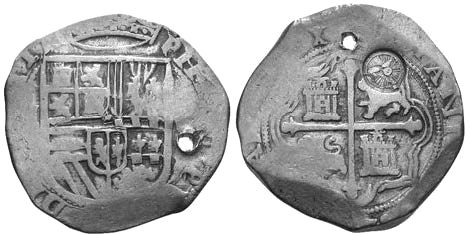
Philip II “arched crown”
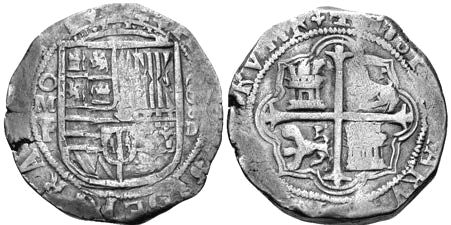
Philip II with “oD”
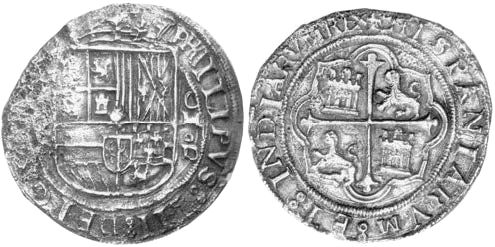
Philip III “royal” with “oD”
(image courtesy of Dan Sedwick)
Arms of Naples and Sicily
The second major diagnostic in determining whether a coin is of Philip II or Philip III is the arms of Naples and Sicily present in the Hapsburg shield on the obverse. Close examination of the vertical lines present in these arms shows that they are placed differently for the coinage of these two kings. All of the coins of Philip II that I have examined exhibit the arms of Naples and Sicily in the same manner with a set of four vertical lines. The coinage of Philip III differs in that the arms of Naples and Sicily are made up of three vertical lines with the central bar running directly through the center of the arms. For the vast majority of coin you can determine if they are Philip II or Philip III using this method. The exception to this rule comes right at the end of the rule of Philip II and overlaps with the first coinage of Philip III on the coinage that bears the “oD” mark. All of the coinage for Philip II and Philip III that bear the “oD” mark exhibit the arms of Naples and Sicily in the manner it was used for Philip II.

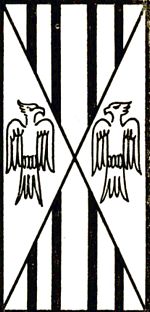

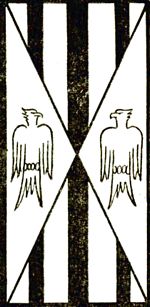
Philip II Arms Philip III Arms
Half Reales
So, now that we have a general understanding of how to tell the difference between coins of Philip II and Philip III on the larger denominations, let us consider how to determine this on the half reales. The half reales differ from the rest of the series in that the obverse displays the king’s name laid out in a monogram as the central design, rather than a shield. The monogram is an overlapping arrangement of letters simply spelling the king’s name “PHILIPPVS”. Since both king’s names are Philip, this can be somewhat confusing for some. The simplest method in making this distinction is the placement of the “V” which is placed either at the top or the bottom of the monogram. For the coins of Philip II the “V” is placed below the central cross bar of the “H”. For Philip III it is the exact opposite where the “V” is placed above the central cross bar of the “H”. There is one very rare exception to this rule that I am aware of where a “V” is place both above and below the cross bar of the “H”.

Half reales Philip II
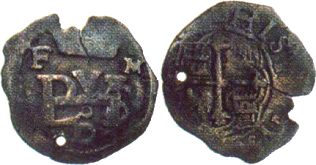
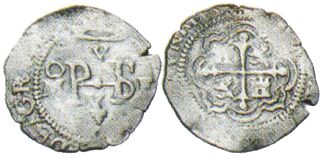
Half real of Philip III Half real transitional?
Possibly Philip II over Philip III
8 Reales
Documentation suggests that after the first 8 Reales of Charles and Johanna it was not until 1575 that 8 Reales would once again commence production. Before the existence of the Charles and Johanna 8 Reales was confirmed, it was generally accepted by the numismatic community that the first 8 Reales of Mexico where those produced during the reign of Philip II. The coin pictured here is one such coin. It exhibits a unique feature to Mexican coinage in that the denomination is a flat top or Spanish “8”. This is the first 8 Reales of Philip II for which there is only one die known and should be considered extremely rare.
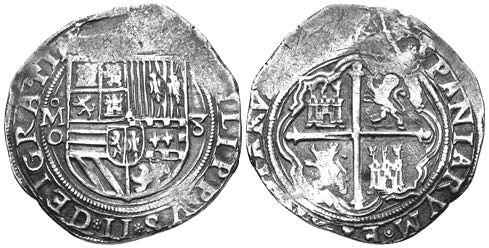
Philip II Flat top “8”
The first 8 Reales of Philip II
The 8 Reales of Philip II and Philip III can be tracked and sequenced through a slow debasement or digression of style. At the beginning of Philip II’s reign the dies are neatly made with punches of good style. These punches were probably produced in Spain. Slowly this style begins to deteriorate. This is perhaps most notable when one examines the style of the lions on the reverse. Coins produced during the office of assayer “O” (the first assayer) exhibit well-designed lions standing upright on their hind legs. Continually during the reign of Philip II and entering the reign of Philip III, the style of these lions becomes debased to a level where they look similar to a monkey or dog. Over time the entire style of these coins digresses, probably as a result of punches breaking and being replaced by punches that were produced locally by engravers who were completely unfamiliar with what a lion actually looks like.
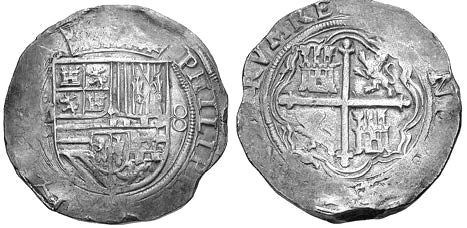
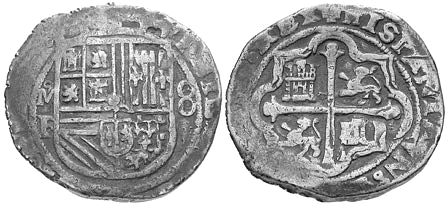
Philip II 8 reales Assayer “O”
The coinage of assayer “F” continues in the same basic manner of assayer “O” with the style gradually becoming cruder.
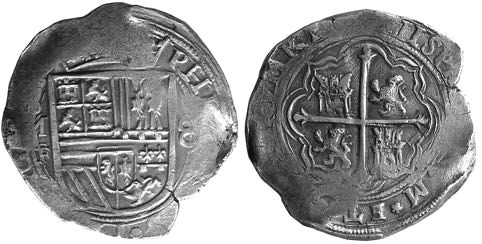
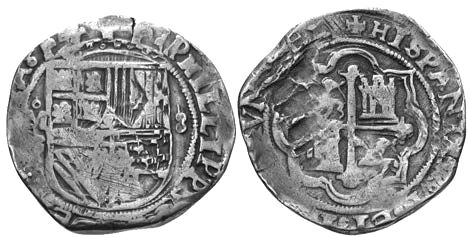

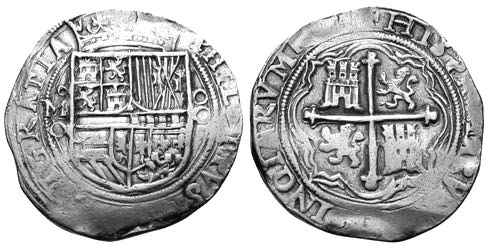
Philip II 8 reales Assayer “F”
This rare and interesting type exhibits a small “O” below the mint mark, just above the assayer letter “F”. Historically many numismatists (myself included), thought this to be a transitional coin showing the assayers letter of both assayer “O” and “F”, the theory being that both assayers were working in office at the same time while “F” transitioned into the position of sole assayer. While this logically makes sense, the die style proves this theory to be incorrect. The style of the die work is far too crude to be a product of assayer “O” and appears to be much latter in the tenure of assayer “F”.
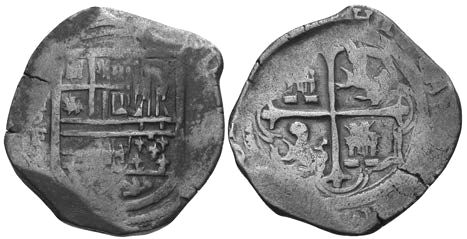
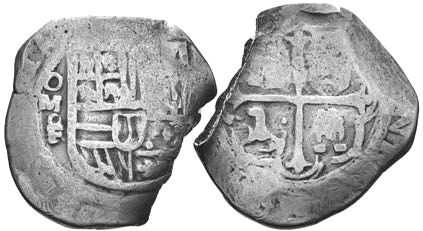
Philip II 8 reales “oMoF” Assayer “F”
This coin was produced very late in the reign of Philip II. By this time the die style had digressed to a level where most pertinent aspects were produced with locally made punches.
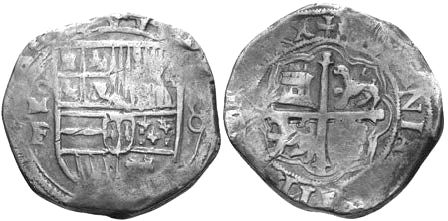
Philip II 8 reales “oMF” Crude style
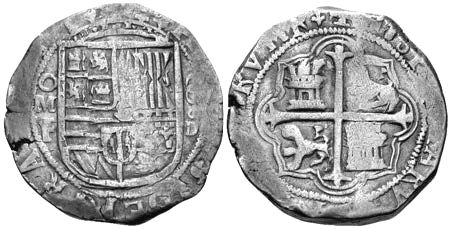
Philip II 8 reales “Assayer “F”with “oD”
This coin is among the last coins issued under Philip II. It exhibits an added mark of “oD” which is believed by many to be a second assayer’s letter. These are extremely rare and very seldom encountered. We know that the coins bearing the added mark of “oD” are the last 8 Reales of Philip II as the first 8 Reales of Philip III were produced in the same manner.
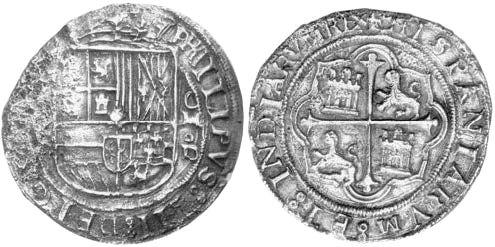
Philip III “royal” with “oD”
(image courtesy of Dan Sedwick)
The first coinage of Philip III is virtually identical to the last coinage of Philip II. The only major difference was changing the king’s ordinal from “II” to “III”. These like the last coinage of Philip II all bear the added mark of “oD”. All coins of this type are extremely rare and should be considered a transitional issue between Philip II and Philip III. Note the debased style of the lions. This was a temporary coinage until new punches arrived and regular coinage production began in a refined style.
With the exception of the “oD” coinage of Philip III, most of the coinage produced during this king is from fairly well executed dies of a more refined style than the late issues of the previous king.
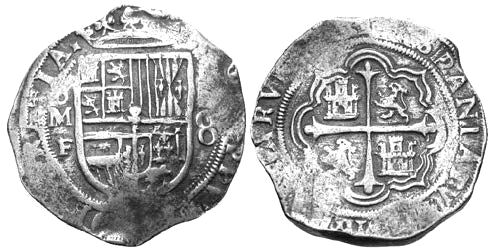
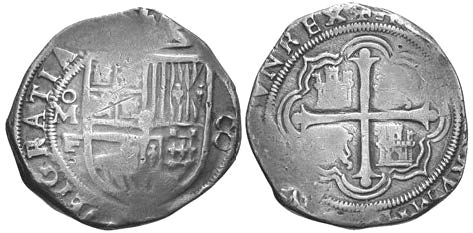
Philip III Assayer “F” New refined die style

Philip III 1607 - the first dated coin of Mexico
